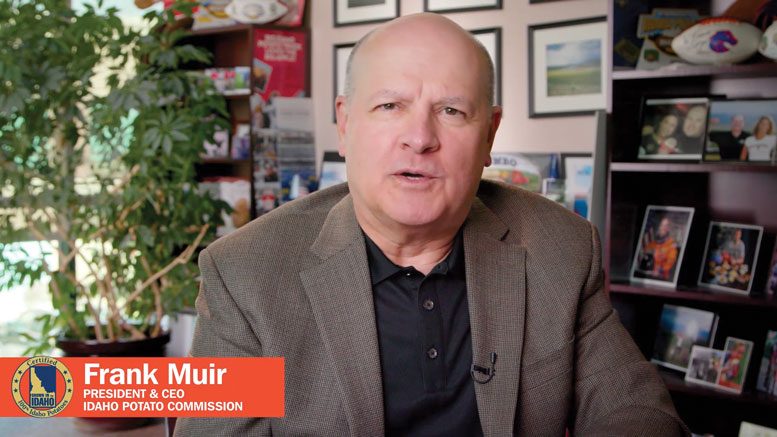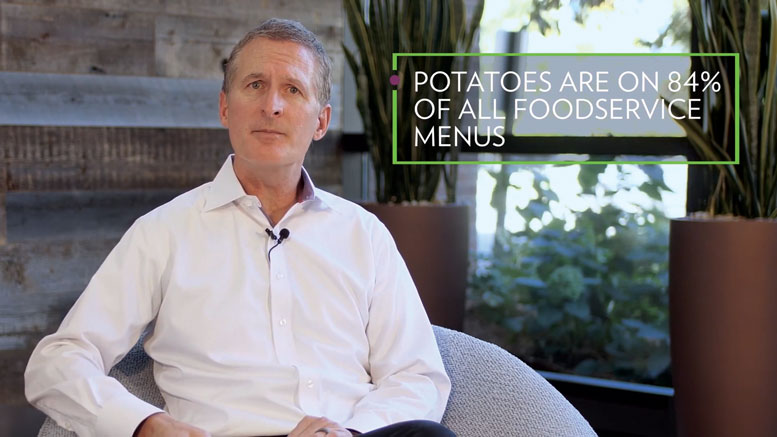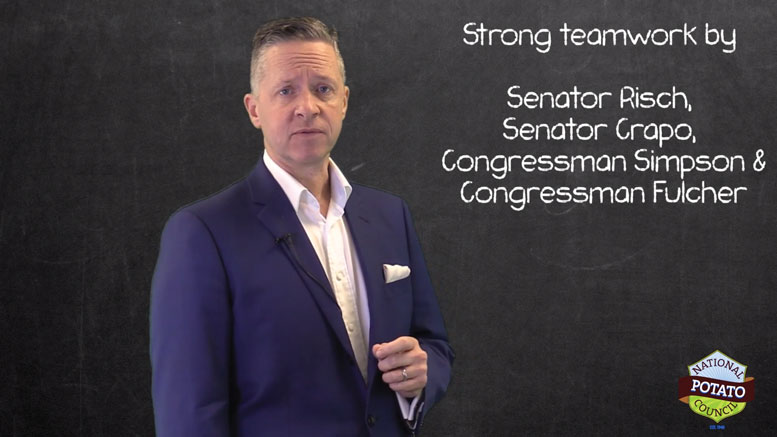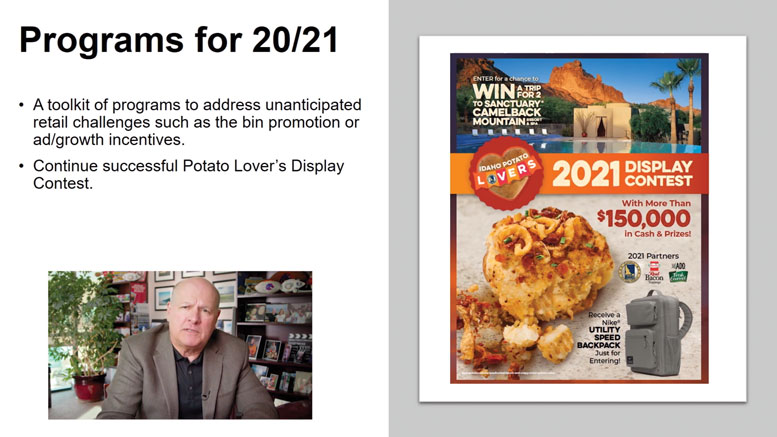Just like almost every other big event in 2020, the Big Idaho Potato Harvest Meeting was different than the norm, with organizers condensing the usual full-day event into an hour-long Zoom call. The meeting included presentations from Kam Quarles, CEO of the National Potato Council (NPC), and Blair Richardson, CEO and president of Potatoes USA, reporting on the organizations’ efforts to strengthen the potato industry by improving growers’ short-term and long-term economic position.
Frank Muir, president and CEO of the Idaho Potato Commission (IPC), followed with the annual IPC update and marketing plan for the 2020-21 crop year. He detailed what the IPC is doing to build the Idaho potatoes brand, strengthen its equity, and expand its reach across the U.S. and beyond.
Annual IPC Update
Muir set the stage by reminding his audience that 2020 was full of challenges, from cold weather that led to fear of a French fry famine early in the year to the COVID-19 pandemic which led to drastic changes in demand for potatoes and potato products.
He went on to explain how the IPC pivoted to adjust its programs in response to those challenges. To start, the IPC helped redirect foodservice cartons to retail shelves, ultimately moving 37 million pounds of potatoes from foodservice to retail. The commission also worked with operators in the foodservice industry to shift business to a delivery or takeout mode and continued to supply economic and easy-to-prepare potato recipes.
In addition, the IPC educated the public on how to store and use potatoes and worked to reinforce to consumers the value and essential nature of potatoes in family meals.
On the government side, the commission worked with the NPC and state organizations to secure financial support for growers and helped government leaders see the importance of including potatoes in the USDA bonus buy program, Trade Mitigation Program and Farmers to Families Food Box Program, as well as establish meaningful inclusion of potatoes in the Coronavirus Food Assistance Program.
“What could have been a total disaster, we have been able to clean up this crop and move it at profitable prices,” Muir said.
Marketing Plans
Muir acknowledged that as a result of the COVID-19 pandemic and other current trends, “we’re in a new world today.” Going forward, the foodservice industry will have to be more flexible, he said, pointing out the continued need for curbside, drive-thru and take-out service. At the same time, consumers are expected to continue cooking more meals at home. The IPC plans to respond with programs to address these conditions.
Outlining the IPC’s 2020-21 marketing plans, Muir said television advertising will continue to be at the foundation of the commission’s marketing programs. The IPC has a new TV spot that promotes Idaho potatoes as more than a side dish.
New this year, the IPC will be advertising and promoting on digital formats including www.allrecipes.com, along with online grocery shopping sites to leverage changing consumer behavior due to the pandemic; 30 percent of consumers are now ordering groceries online for curbside pickup.
Plans call for the Big Idaho Potato Truck, which returned home at the beginning of the pandemic, to hit the road in March for its 10th anniversary tour; however, plans are tentative.
Wrapping up with a brief update on international markets, Muir reported that Idaho is shipping fresh potatoes to more than 20 countries. The IPC plans to focus on Southeast Asia, particularly Malaysia and Singapore, because of the growth happening there and also refocus attention on opportunities in Taiwan. The commission will also invest efforts in Latin America, especially Mexico, and will expand in other markets as it makes sense.
“When we see a need to change a program or add a program, we will do it. We will pivot on a moment’s notice as the industry sees a need,” Muir said. “We’ve proven that year after year and no better year than this past year.”




